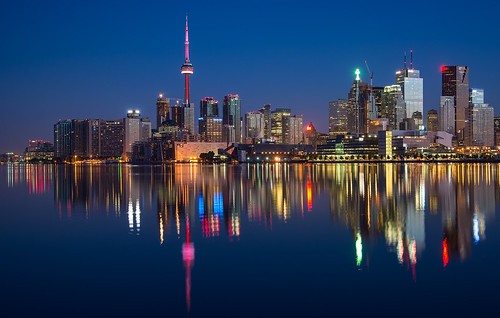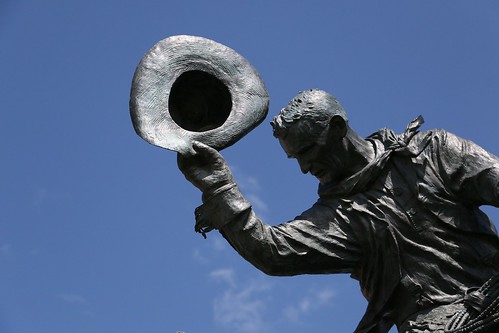Discover Canada: a Traveller’s Guide
So you’re thinking of taking a trip to the Great White North, eh? Great choice! Canada is full of unforgettable experiences waiting to happen.
Of course, being the second-biggest country on Earth means that it’s unrealistic to think of Canada as just one destination. The landscapes, culture, towns and cities, and even the language vary across its 9.98 million square kilometres (3.85 million square miles). And that’s before we get to the dramatic difference between visiting in summer and winter.
To help you decide which parts of the country to include in your Canadian adventure, we’ve put together this handy guide.

Before jetting off, it’s also worth noting that you’re either going to need a Canadian visa or Electronic Travel Authorization (eTA) to enter the country.
If you’re from one of the visa waiver countries, you’re lucky enough to be able to get an eTA online without the hassle of getting a visa at an embassy. If you’re going on a Canadian road trip or staying in the country for a while, just make sure that you plan the trip to be within the Canada eTA duration. Otherwise, you might need to leave and re-apply for permission to come back.
Now that the paperwork is out of the way, let’s take a look at some of the many sides of the Great White North.
Toronto
Although Ottawa serves as the Canadian capital, Toronto is the country’s largest and arguably most famous and important city. A cultural hub of arts and entertainment, Toronto has a thriving music scene, numerous galleries and museums, and various festivals and events throughout the year.
If it’s landmarks you’re after, look no further. Toronto is home to the tallest free-standing structure in the Americas: the CN Tower. The observation deck has multiple levels. The lowest features a glass floor and an outdoor terrace with a dizzying view from 342 m. Those who climb higher can observe the Toronto skyline from the “SkyPod” at 446.5 m. You can also stop here for a bite to eat at the 360 Restaurant, which slowly revolves around the tower as you enjoy your meal.
And that’s not the only spot to snap the perfect photos of your trip. There’s the castle of Casa Loma, the historic distillery district, the sun setting over Lake Ontario, the many picturesque cafés and restaurants… Plus, it’s easy to book a day trip from Toronto to Niagara Falls. What more could you ask for?

Vancouver
On the west coast of Canada, surrounded by ocean, forests, and mountains sits the city of Vancouver. “Picturesque” doesn’t even begin to cut it.
Vancouver is unusual as a city destination because most visitors come to get outdoors. Take the gondola up Grouse Mountain and drink in the panoramic view. Stroll along the sea wall at Stanley Park or soak up the summer sun at Kitsilano Beach. You can even take a boat trip out to go whale watching.
That’s not the say that the city itself has nothing to offer. Vancouver is diverse and cosmopolitan, with plenty of opportunities to catch live music from exciting local artists.
The old center of Vancouver, known as Gastown, is steeped in history, from its cobblestone streets and iron lampposts to its Victorian buildings. This is a great place to find shops, restaurants, galleries, and more to explore.
Vancouver is also a great place to set out on a cruise along the coast of British Columbia and even up to Alaska.

French Canada and Montréal
One of the largest provinces, Quebec enjoys a unique status in Canada. The culture here is distinct from the rest of the country and yet it makes up an important part of Canadian heritage.
This all comes from the French influence. Historically, this part of Canada belonged to France, before being ceded to the British. However, to this day, the population primarily speak French and the importance of this has led to French becoming a co-official language along with English for the entire country.
The French influence extends to the European architecture in cities like Montréal and Quebec City and to the local cuisine, from crepes to sorbets.
And of course, poutine. The iconic staple of French Canadian cuisine, the combo of french fries, cheese, and gravy is popular across Canada. It is the ultimate example of how Quebec is different and yet an integral part of the country. And you cannot leave without trying it.

Alberta and Canadian Cowboy Culture
Cowboys? In Canada? Yep!
While Stetsons, bullwhips, boots, and spurs are largely associated with Texas and other parts of the US, thanks in no small part to John Wayne, ranching culture extends across much of the middle of North America. The Prairie Provinces of Canada are home to their own brand of cowboy culture and Alberta is the arguably the centrepiece of the Canadian wild west.
Every year, the city of Calgary hosts the self-proclaimed “Greatest Outdoor Show on Earth”. The Calgary Stampede is one of the world’s largest rodeos.
Featuring a huge fairground and events such as chuckwagon racing, concerts, stage shows, agricultural competitions, and exhibitions from Canada’s First Nations, the Stampede is a unique experience and a snapshot of a lesser-known side of Canadian culture.
Calgary is a great place to visit in and of itself. Aside from being voted one of the most livable cities in the world, it is close to the Rocky Mountains — more on that below.

The Canadian Rockies
The Rocky Mountains are maybe the best way to experience the wild side of Canada. From turquoise lakes nestled between forests and rivers to vast glaciers and snow-covered peaks, the scenery is nothing short of spectacular. Banff National Park is particularly renowned for its natural beauty.
Wildlife lovers might catch a glimpse of bears, deer, elk, moose, bighorn sheep, eagles, coyotes, or even wolves. Even more elusive are lynx and cougars.
The Rockies are not just famous for the views. There are a number of resorts based around hot springs where you can get some R&R. Having some chill time is a nice way to balance the outdoor activities you can get up to, whether hiking, kayaking, white-water rafting, or skiing.
The Rockies straddle the border of Alberta and British Columbia. They can easily be reached from Calgary on one side or Vancouver on the other. It is well worth taking some time on a trip to either city (or both!) to head to the mountains and experience the wild heart of Canada.

Even now we’re barely scratched the surface of Canada. You could brave the snowy climes of the Yukon or Northwestern Territories or head for the laid-back Celtic-infused culture of the Atlantic Provinces.
Whether you’re spotting polar bears in the far north or enjoying a folk festival in Newfoundland, the possibilities are endless.
Canada. What a place.
Pin for later:

-

- Log in to post comments




















